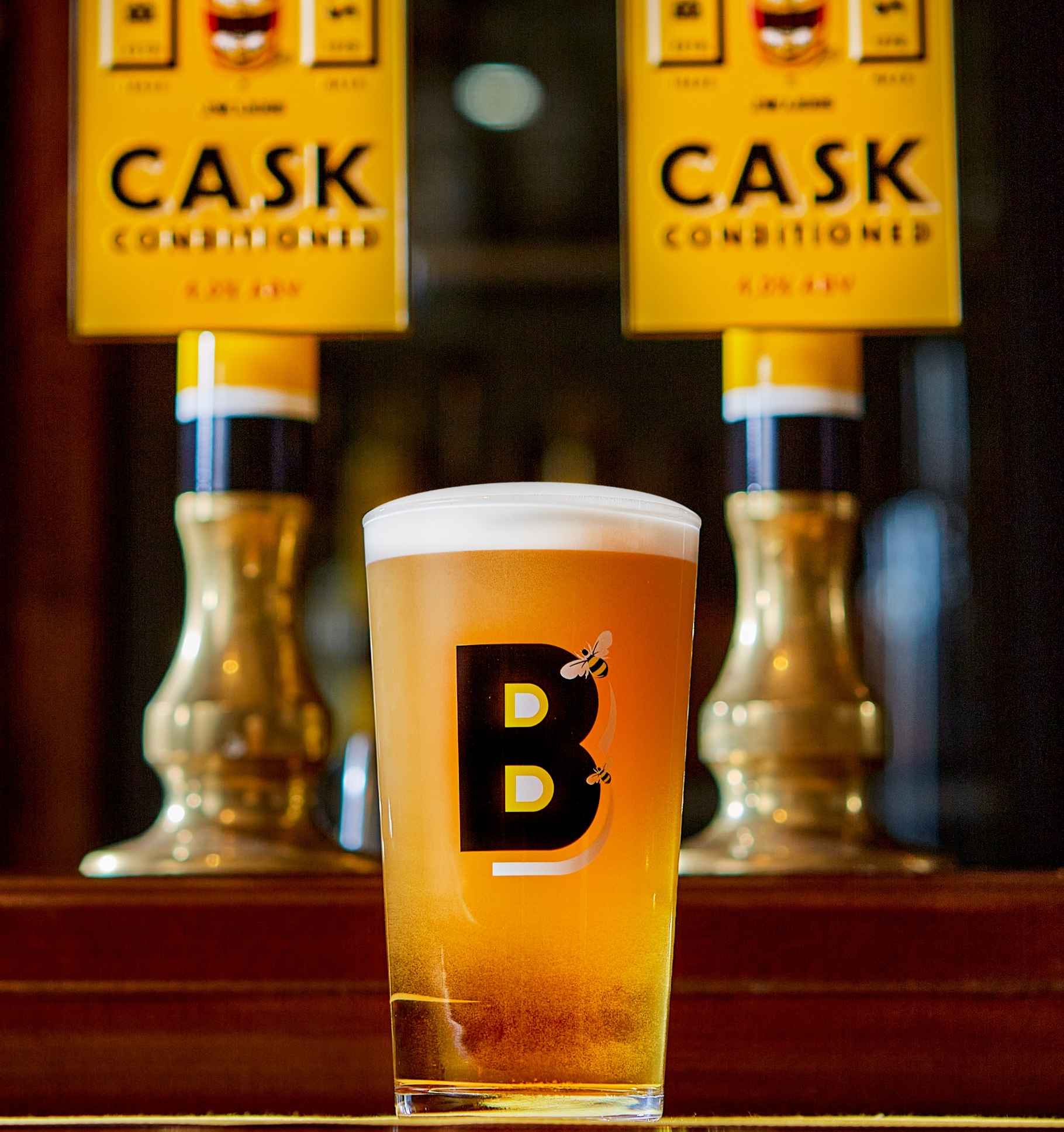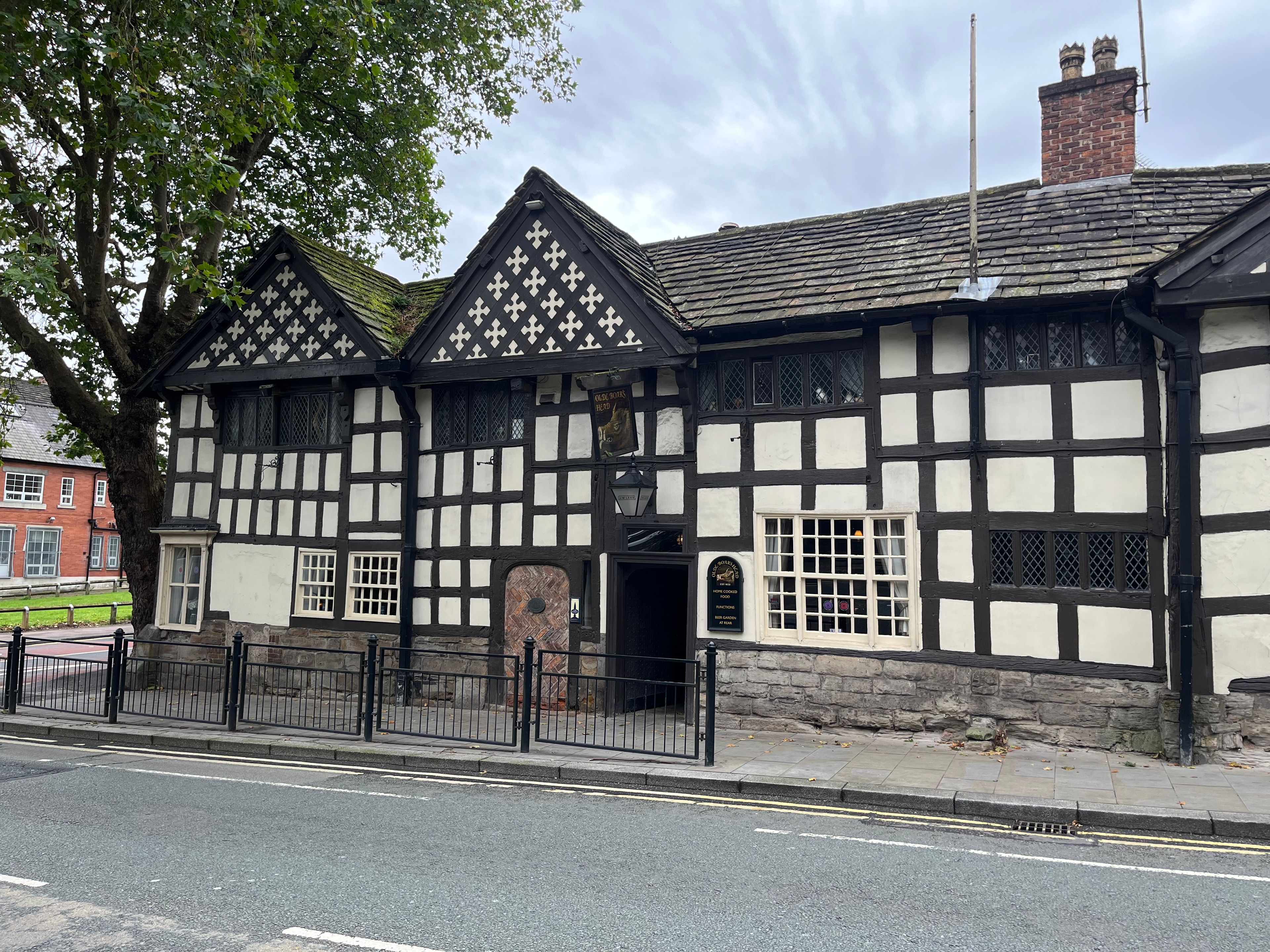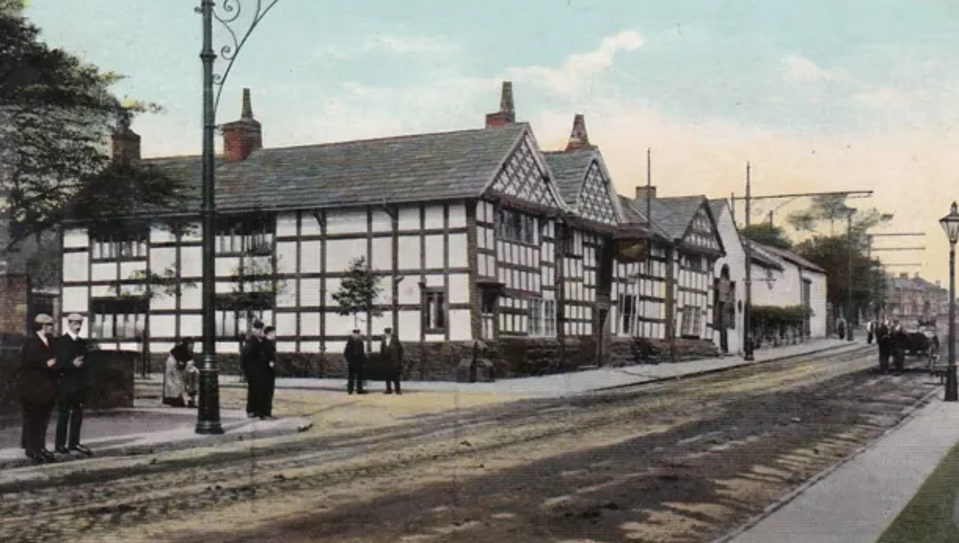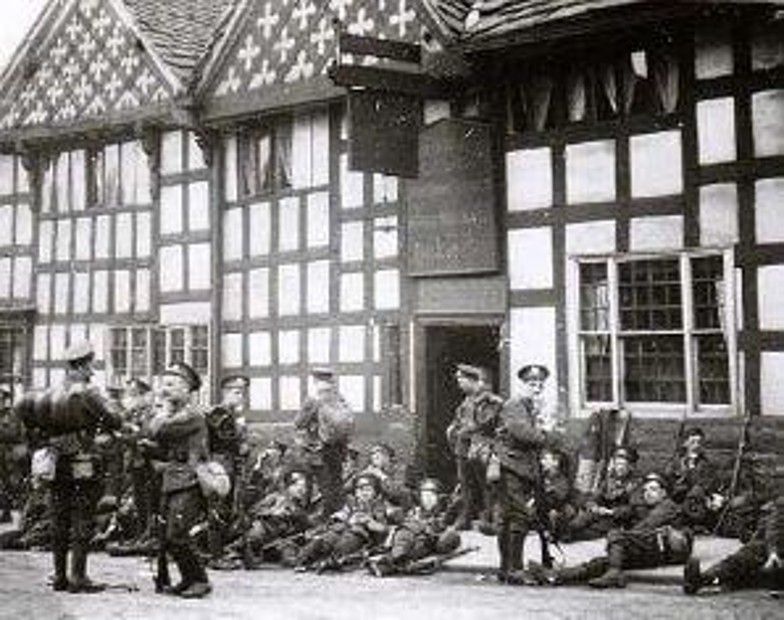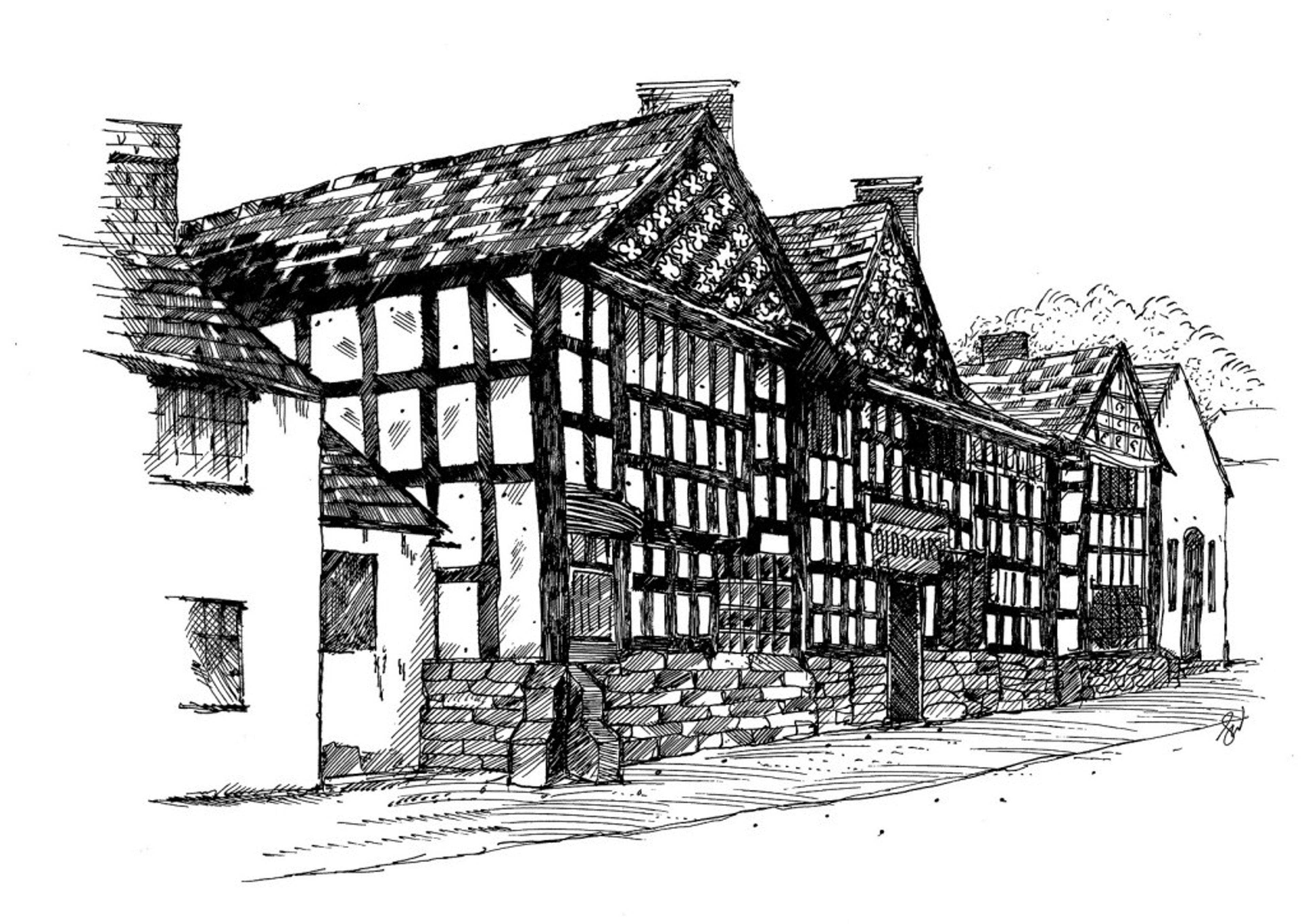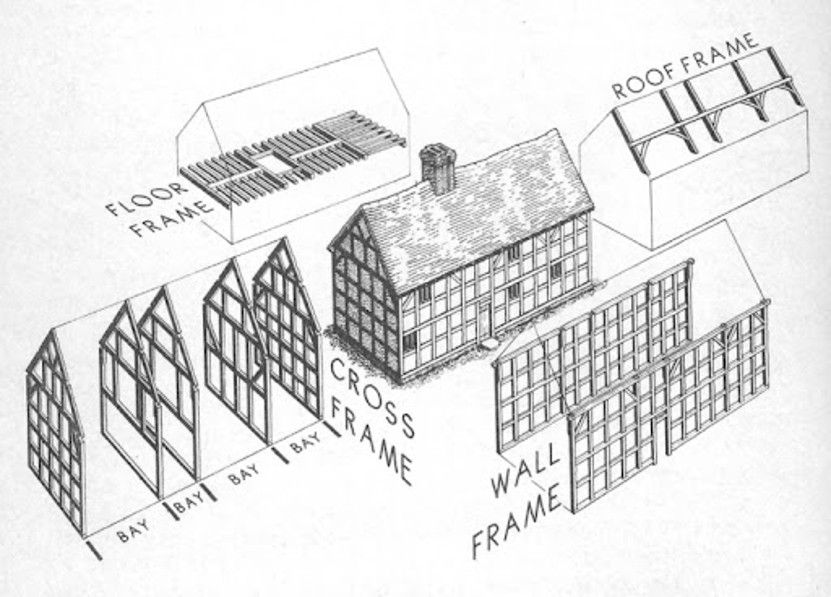One of the oldest pubs
in England, sits in Manchester
When you think about the oldest pubs in England, you tend to think about rural countryside, long forgotten inns or tiny London boozers that stood their ground despite the city’s economical boom. I don’t imagine many would think of Middleton as the possible home of one of the oldest pubs in England, however JW Lees, the oldest brewery in Manchester, is now grasping the title of Manchester’s oldest pub, and possibly the oldest in England.
Great Britain is nothing without it’s pub culture. The British have been serving up frothy ales since the early medieval period when alehouses started to appear in public places. As long-distance travel increased, people needed safe places to rest, eat and of course drink. By the 16th century, Inns were well established, recognisable by signs displayed at the front of the building, often displaying the like of boars, lions and crowns. They became social hubs and key stopping points along coaching routes.
One such example of these popular inns, was The Olde Boar’s Head. Though it has gone by a number of different names over the years, the pub has continually operated with one purpose, to serve as a community hub, offering beer and food to locals and travellers alike.
The Olde Boar’s Head is a rare and remarkable example of an early timber-framed building, recognised by Historic England for its significance. This Grade II* listed building is often claimed as one of the oldest original public house in England, if not the oldest. Located in Middleton, the pub has been serving patrons since the 17th century, making it a strong contender for that historic title.
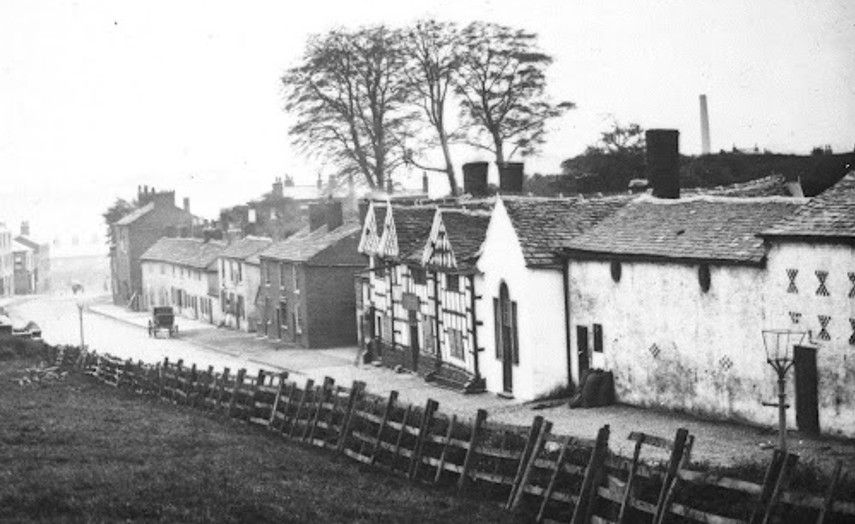
Dating The Olde Boars Head
The Old Boar’s Head’s history runs deep and lucky there is plenty of evidence to support some bold claims.
In 2015 The Middleton Archaeological Society, funded by the Middleton Township Heritage Lottery Fund, set about aging The Olde Boars Head to finally answer some long asked questions. Just how old is The Olde Boars Head? Turns out… it’s very old!
Despite being part of Middleton’s Golden Cluster of historic buildings, the timber framed building had never been dated and so Robert Howard of the Nottingham Tree-Ring Dating Laboratory set about to dating the building through dendrochronology, that’s tree-ring dating to you and me. In January 2016, Robert delivered his findings to a crowd during a sell out talk on Dendrochronology.
14 core samples where taken from all the timbers of The Olde Boar’s Head and were prepared by sanding and polishing to clearly show the annual growth ring. After extensive measuring and comparing to a huge list of reference material, it was clear that the first ring could be dated back to 1403 and the last being 1654. This gave the first initial time frame of when the building could have been constructed.
In 10 of the samples, it was concluded that the trees would have been felled in 1622, likely all from the same forest. The use of freshly felled trees was typically followed immediately by construction, as was the standard practice for builders of the period. And so The Olde Boar’s Head finally head a construction date. But further evidence was needed if it was to make claims of being one, if not the oldest pub in England.
The location, size, and further extension of the building in 1654, all paint a picture of a well positioned building, capable of housing a good number of people, on a busy coaching route between Manchester and Rochdale. Long Street forms the central spine of Middleton and historically connected local market towns. Over the centuries, it was used by travellers, packhorses, and later stagecoaches, with coaching inns and way-markers along the route highlighting its importance in transport before the advent of railways. The concentration of substantial timber-framed houses and public buildings along the street would have created demand for lodging, meeting spaces, and social hubs for merchants, travellers, and pilgrims. In addition, the presence of several notable churches, such as St Leonard’s Church, a medieval centre of community life, along with a 17th-century school, indicates that Middleton was an important and thriving community. These factors together suggest that The Olde Boar’s Head could have naturally functioned as a public house to accommodate the needs of the local population and those passing through the area. However, this was just speculation, further proof was needed to be sure the building operated as an Inn shortly after it’s construction.
The buildings first tenant was Issac Walkden, the son of Middleton’s schoolmaster Robert Walkden, who sadly passed in the summer of 1632. Issac’s will was luckily preserved at Lancashire Record Office in Preston and offered some incredible insight into Issac’s possessions and thus the buildings use. The will lists an inventory of nine beds, twenty chairs or stools, brewing vessels, barrels, pots and glasses across six rooms. In the early 17th century the average house, for ordinary house holds was relatively small, most common town houses had 2 to 4 main rooms and given the form of the building and the level of decoration to the framing, it is more likely that the building was not used for agricultural purpose, more likely for housing its tenants and given the extremely high number of chairs compared to the number of rooms, it is hard not to image that the building was being used as an inn or public house shortly after construction.
It also worth taking into consideration that the Walkden family went on to run The Olde Boar’s Head until the end of the 17th century whilst they also farmed nearby land, which would have provided a reliable source of grains for brewing and a simple method of converting their harvest into a sellable product.
Read the full report here Tree-ring Dating of the Old Boar’s Head Report
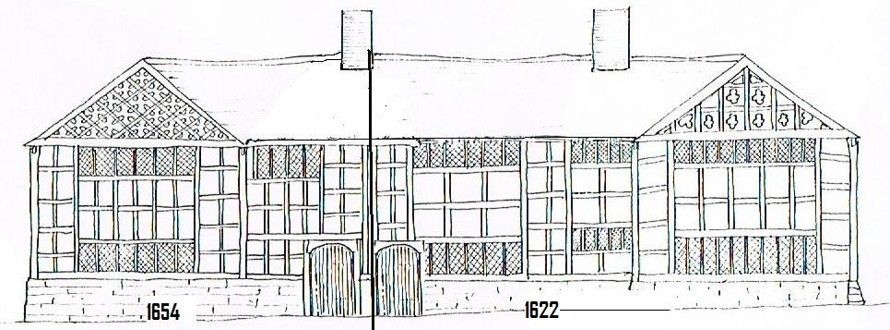
Manchester's oldest pub contender
Whilst it is clear that The Olde Boar’s Head is a strong contender for Manchester’s oldest pub, there have been many other pubs over the years attempt to claim the title for themselves.
It is widely believed that the oldest pub in Manchester is in fact The Old Wellington, which was built in 1552. Case closed, right? Not quite. The building was originally built next to the present-day Market Square in Manchester, which was known as the Shambles at the time. The building was partially used as a drapers shop, central to the Byrom’s family textile business. It wasn’t until 278 years later, in 1830, was the first pint pulled when the building was converted into a pub, known as the Vintners Arms. Ok, but the building is still older than The Olde Boars Head, so it can still claim the title, right?
The age of the building is very controversial, some would say the original building doesn’t even exist any more. Through it’s history, the building has been redesigned and even rebuilt from scratch. In 1970, the pub was closed for over 10 years during major construction work which raised the building 1.4 meters, sitting the pub on concrete pillars. The structural change was part of a urban project to free up city centre land and make may for further development including the Arndale Centre. Then in 1996, after being damaged during the notorious 1996 Manchester bombings by the IRA, the pub was completely dismantled and rebuilt in a new location. Whilst this meticulous method ensured the inn retained its historical authenticity, it is arguably not the original building it once was. Part of the lure of drinking in an old historical pub is to imagine the lives and stories that the building shares.
The Old Wellington has had it’s challenges over the years and obviously deserves mention when discussing Manchester’s oldest pub. But does a building that only started pouring pints in 1830 and which has been completely dismantled and moved to a brand new location have claim over the title, the jury it out.
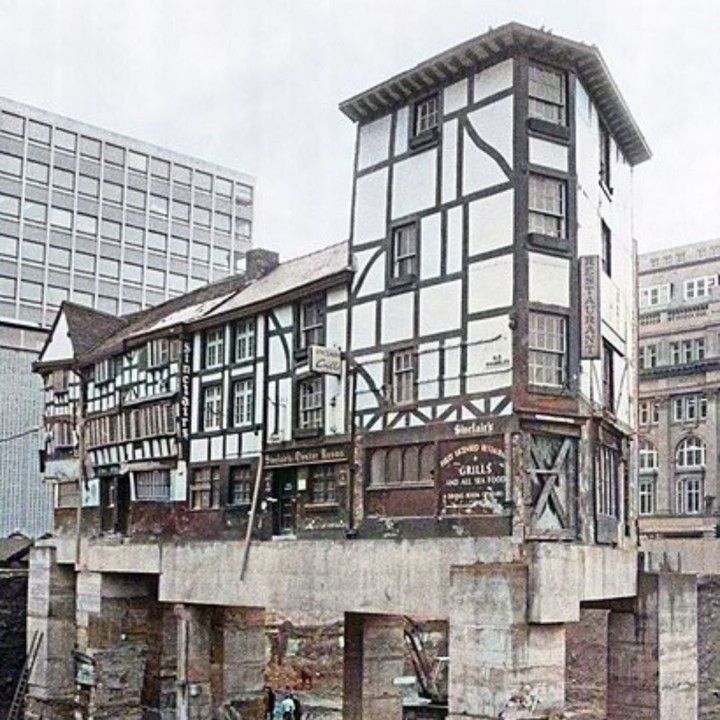
Drinking in a pub that has stood for centuries is like stepping back in time. Every sip, every conversation, and every laugh connects you with generations of people who have shared the same space over hundreds of years. The creaking floorboards, timber beams, and familiar scents are more than just features of the building; they are a living link to the past. Here, stories have been told, deals struck, and friendships forged, just as they are today. Experiencing life in such a historic pub allows you to share in the human experience across time, feeling a sense of continuity and connection with those who have come before, and appreciating the timeless social heart of community life.
Read the Historical Guide to England’s Oldest Public House Written by Cliff Ivers on behalf of Middleton Archaeological Society. Supported by Edgar Wood and Middleton Townscape Heritage Initiative.
Please enable marketing cookies to view video
